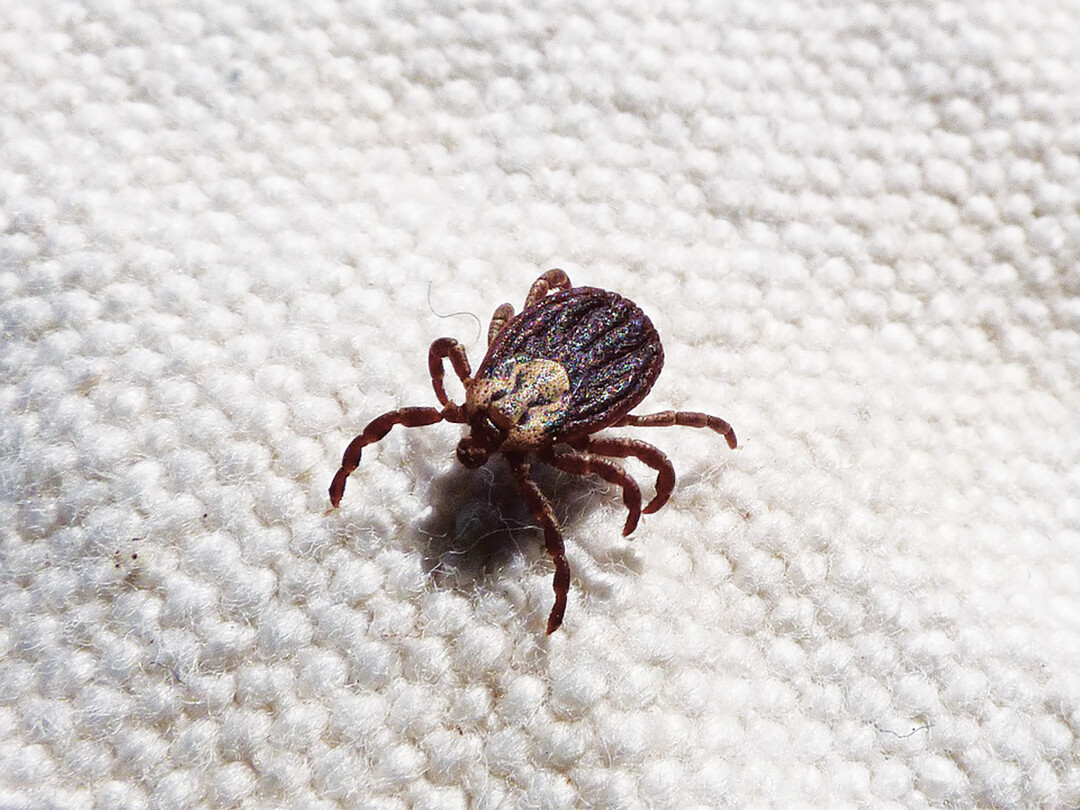4 Tips to Keep Disease-Carrying Ticks Away
More than 40 percent of local ticks carry Lyme disease; stop it in its tracks

Since 2014, the Eau Claire Health Department has been involved in a tick surveillance project at two rural county parks to assess the percentage of ticks infected with Lyme disease. In 2017, grant funding expanded the tick surveillance project to two additional parks within the city. With over 40 percent of deer/bear ticks collected in Eau Claire area parks infected with Lyme disease, it’s clear that the disease is in our community. Lyme disease is the second most prevalent reportable communicable disease in Eau Claire County. It’s in our backyards, our parks, our trails … and we need to talk about how to prevent it.
The tick that is of main concern in Wisconsin is the deer tick; it is also called the black-legged tick or bear tick. The reason that the deer tick is the tick of main concern in Wisconsin is because of the large number of diseases it can spread. It can spread anaplasmosis, babesiosis, ehrlichiosis, Lyme disease, and Powassan virus. The disease that causes the highest number of people to become ill in Wisconsin is Lyme disease.
Lyme disease is caused by bacteria that ticks get from biting animals that already have Lyme disease. They can then spread the disease to people. A tick has to be attached for 24-48 hours in order to give you Lyme disease, which is why it is really important to catch the ticks early.
With so many mental and physical health benefits associated with being in nature, we want to promote how to protect yourself from tick bites so you can continue enjoying the outdoors. Before gardening, camping, hiking, or simply playing outdoors, make tick bite prevention part of your outdoor plans.
There are several steps that you can take before you even go outside to protect yourself from ticks:
1. Protect your dog or cat from ticks.
Not only can they get sick from Lyme disease and other tick-borne illnesses, but they can bring ticks and other pests inside your home. Because you are inside your house, you may not normally think to look for ticks and you might not notice them for a while. You can talk more with your veterinarian about flea and tick preventative medications that can protect both your pets and you.
2. Treat clothing with 0.5% permethrin solution.
Permethrin is the only insect repellent that also kills ticks. Treat the clothes before you wear them and let them dry thoroughly. Permethrin lasts through several washes in your washing machine.
3. Wear appropriate clothing.
Even when it’s warm out, it’s important to cover as much skin as possible – so wear long pants and a long-sleeved shirt in order to keep ticks on the outside of your clothing. It’s also important to wear light-colored clothing; this makes a dark tick stand out against your clothes and makes it easier to spot and remove quickly. Wear closed-toe shoes and tuck your pants into your socks when you go outside; this makes it difficult for ticks to crawl into your shoes or up your legs and helps keep ticks on the outside of your clothes.
4. Apply insect repellent.
Apply repellents according to the label instructions. The Centers for Disease Prevention and Control recommend using repellents with DEET, picaridin and/or permethrin on clothing. DEET is safe for people older than 2 months. When putting the repellent on children, apply it for them. Do not apply it to their faces or hands. If you prefer not to use DEET, permethrin, or picaridin, the Environmental Protection Agency has a list of approved repellents that are effective for repelling ticks on their website, including more “natural” options such as oil of lemon eucalyptus and BioUD.
For more information about Tick-borne diseases and insect repellent options, please visit the Eau Claire Health Department Website or contact us at (715) 839-4718.




















